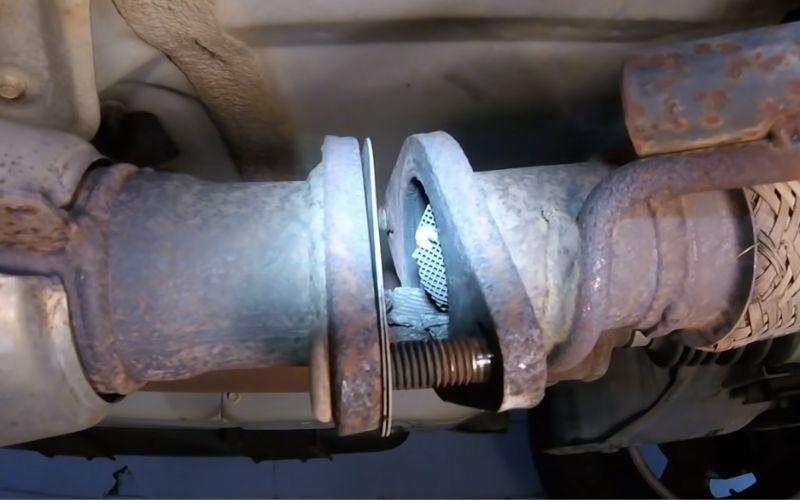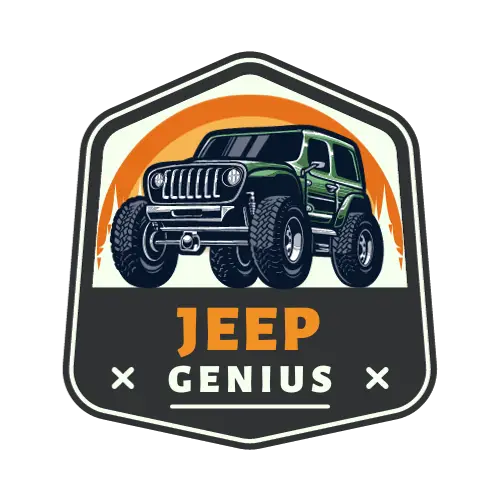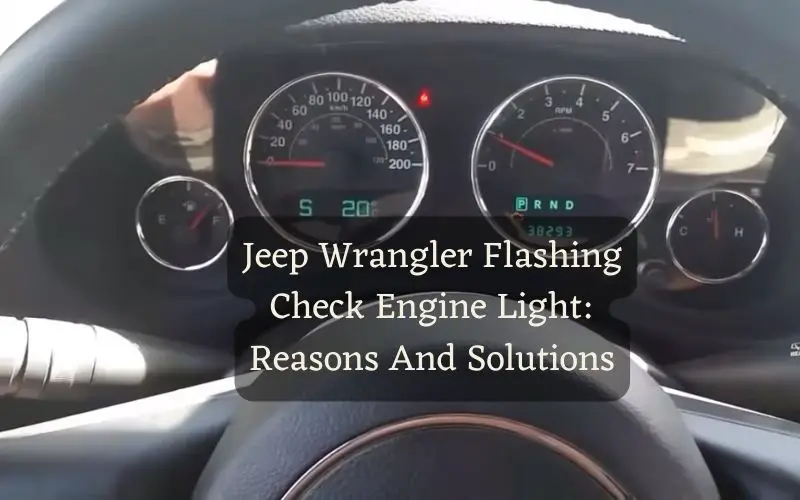The flashing check engine light in Jeep Wrangler is a common issue, many people face this from time to time but the common reasons behind this issue are clogged cat, Misfire, ECM Warning, and many more things.
If you are facing this issue on your Jeep Wrangler, you have to look at these issues, to be more sure, bring an OBD scanner and find the code.
After getting the code, you will get an exact idea of where to work.
In this discussion, we will discuss some reasons behind blinking the check engine light on Jeep Wrangler, what are the symptoms, and how to fix these issues.
So, without any delay, let’s start the discussion.
Why Jeep Wrangler Check Engine Light Is Flashing? With Solutions
The flashing check engine light in your Jeep can be attributed to several potential reasons, as suggested by the forum responses you’ve gathered:
Clogged Catalytic Converter

The catalytic converter is a crucial component of the vehicle’s exhaust system, responsible for reducing harmful emissions by converting toxic gases into less harmful ones.
When it becomes clogged, it can cause various problems and trigger a flashing check engine light.
Symptoms
- Too Much MisFire
- Flashing Check Engine Light
- Reduced Engine Performance
- Poor Fuel Economy
- Overheating
Step-by-Step Solution
If you suspect a clogged catalytic converter in your Jeep Wrangler due to the symptoms mentioned above, here’s a step-by-step solution to address the issue:
- Step 1: Diagnose the Problem: The first step is to connect an OBD-II scanner to your vehicle to read the error codes. A flashing check engine light will typically generate a code related to the catalytic converter, such as P0420 or P0430.
- Step 2: Inspect the Converter: If you’re comfortable working on your vehicle, you can visually inspect the catalytic converter for any signs of physical damage or clogging. However, this may require removing it from the exhaust system, so it’s often best left to a professional mechanic.
- Step 3: Check for Misfires: Address any underlying engine issues that may be causing misfires. This could involve changing spark plugs, ignition coils, or other components that affect engine performance.
- Step 4: Clean or Replace the Converter: Depending on the severity of the clogging, you may have the option to clean the catalytic converter with a catalytic converter cleaner. If the clogging is severe or cleaning is not effective, you may need to replace the catalytic converter with a new one.
- Step 5: Clear Error Codes: After addressing the issue and making any necessary repairs or replacements, use the OBD-II scanner to clear the error codes. If the issue has been resolved, the check engine light should stop flashing.
- Step 6: Monitor Performance: Drive the vehicle for a while to ensure that the symptoms have been resolved and that the check engine light remains off.
ECM Warning

An ECM (Engine Control Module) warning that a fault is severe enough to potentially harm the catalytic converter is a critical issue and one of the reasons the check engine light may flash on a Jeep Wrangler.
The potential damage to the catalytic converter may be caused by a Misfiring Engine or a Rich or Lean Fuel Mixture.
Symptoms
When the ECM detects a condition that could harm the catalytic converter, it often results in several noticeable symptoms:
- Flashing Check Engine Light
- Reduced Engine Performance
- Poor Fuel Economy
Step-by-Step Solution
If you experience the aforementioned symptoms and a flashing check engine light indicating a potential threat to the catalytic converter, here’s a step-by-step solution to address the issue:
- Step 1: Diagnose the Problem: Connect an OBD-II scanner to your vehicle to read the error codes. The scanner will likely generate codes related to the issue, such as those associated with the catalytic converter or engine misfires.
- Step 2: Address Misfires: If misfires are detected, address the root cause. This might involve inspecting and potentially replacing spark plugs, ignition coils, or other components contributing to engine misfires.
- Step 3: Check Fuel Mixture: Investigate the air-fuel mixture to ensure it’s within the manufacturer’s recommended specifications. If it’s too rich or too lean, adjust it as necessary.
- Step 4: Inspect the Catalytic Converter: Visually inspect the catalytic converter for physical damage or overheating. If it’s damaged or severely overheated, you may need to replace it.
- Step 5. Clear Error Codes: After addressing the issue and making necessary repairs or replacements, use the OBD-II scanner to clear the error codes. If the problem has been resolved, the check engine light should stop flashing.
- Step 6. Monitor Performance: Drive the vehicle for some time to verify that the symptoms are resolved and that the check engine light remains off.
Other Possibilities
In addition to misfires, overheating, oil pressure problems, faulty spark plugs, and ignition coils, or issues with components like brakes, fuel lines, belts, and hoses can also trigger a flashing check engine light.
However, a misfire remains the most common cause.
It’s essential to have the specific trouble codes read from your Jeep’s onboard diagnostic system to pinpoint the exact issue.
Once you have the trouble codes, you can proceed with the necessary diagnostics and repairs to address the root cause of the flashing check engine light and prevent further damage to your vehicle.
Can I Jeep Wrangler Drive With Flashing Check Engine Light?
Yes, you can drive your Jeep Wrangler with a flashing check engine light for a short distance to get it to a repair shop or a safe location, but it is generally not advisable to drive it for an extended period.
It’s important to have the underlying issue diagnosed and repaired promptly to prevent potential damage to your vehicle.
If you still drive your in this situation, you will face more issues with your vehicle and it will gradually increase the risk.
Conclusion
These are the reasons and solutions for flashing the check engine light of a Jeep Wrangler.
We have a warning for you, always be aware of your safety while working with engine parts. And don’t always take these troubleshooting so seriously.
It’s essential to consult a qualified mechanic for these processes, especially if you are not experienced with automotive repairs.
A clogged catalytic converter is a critical issue that can affect the vehicle’s performance and emissions, and it should be addressed promptly to ensure the safe and efficient operation of your Jeep Wrangler.


Leave a Reply